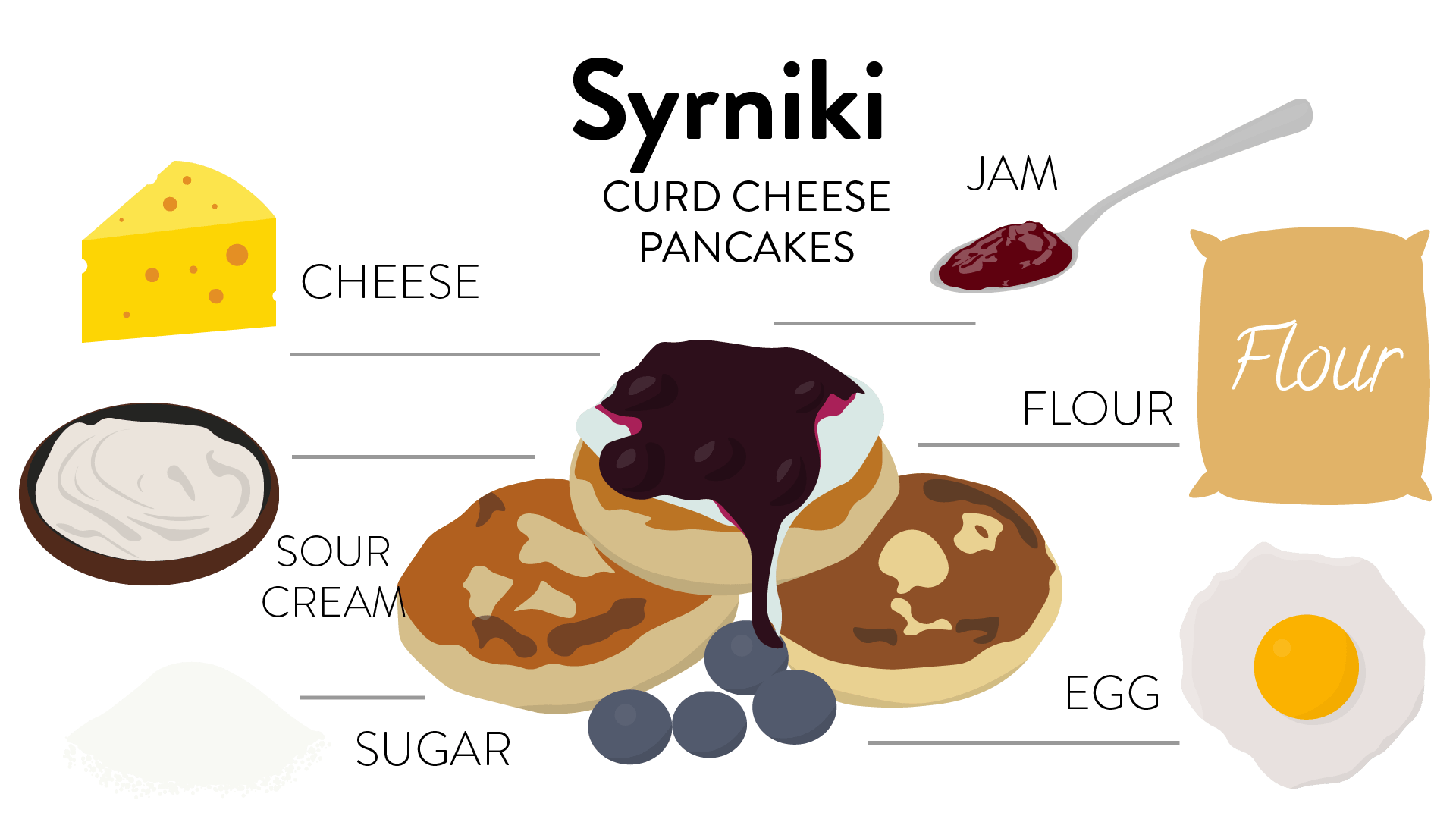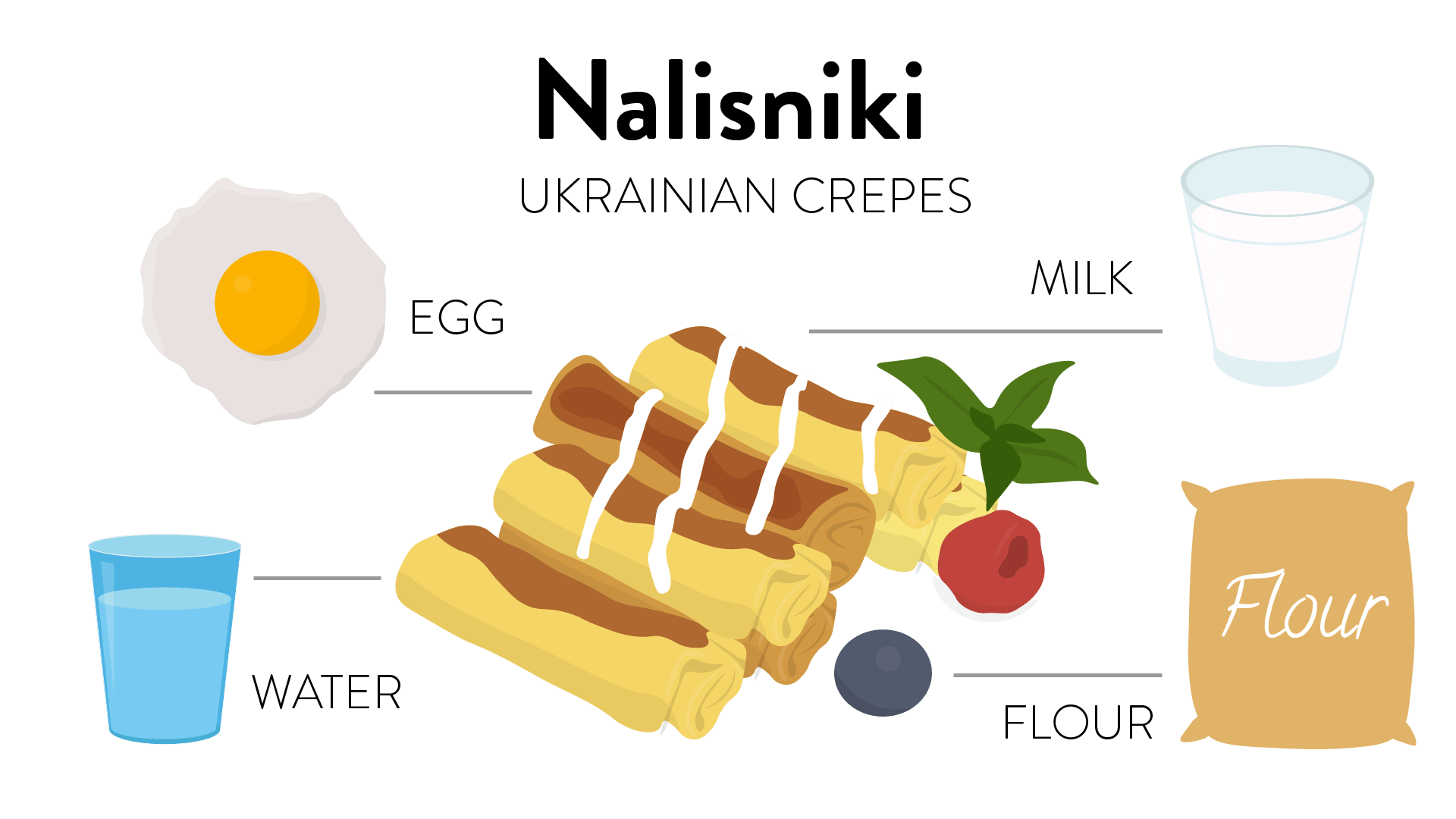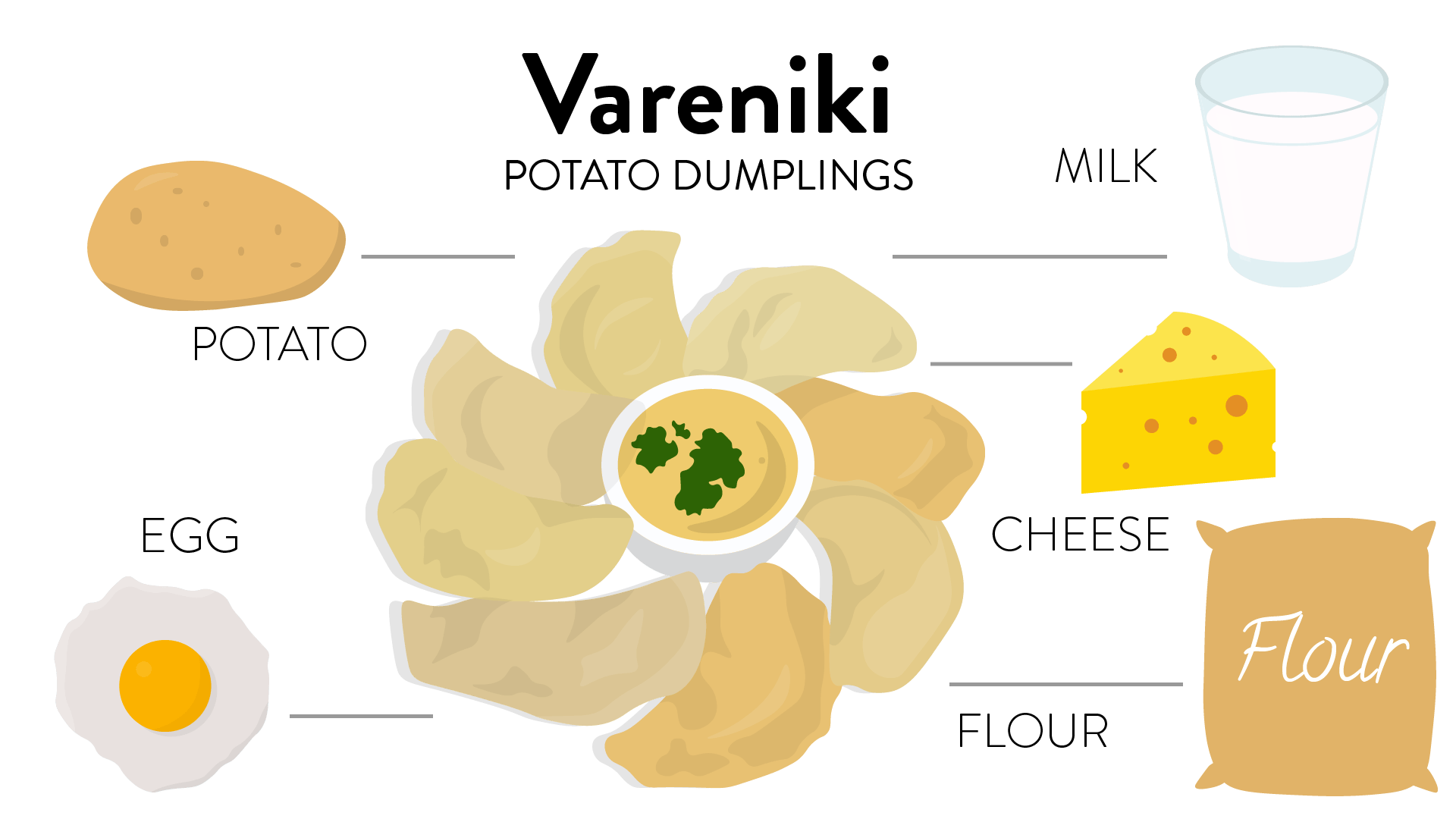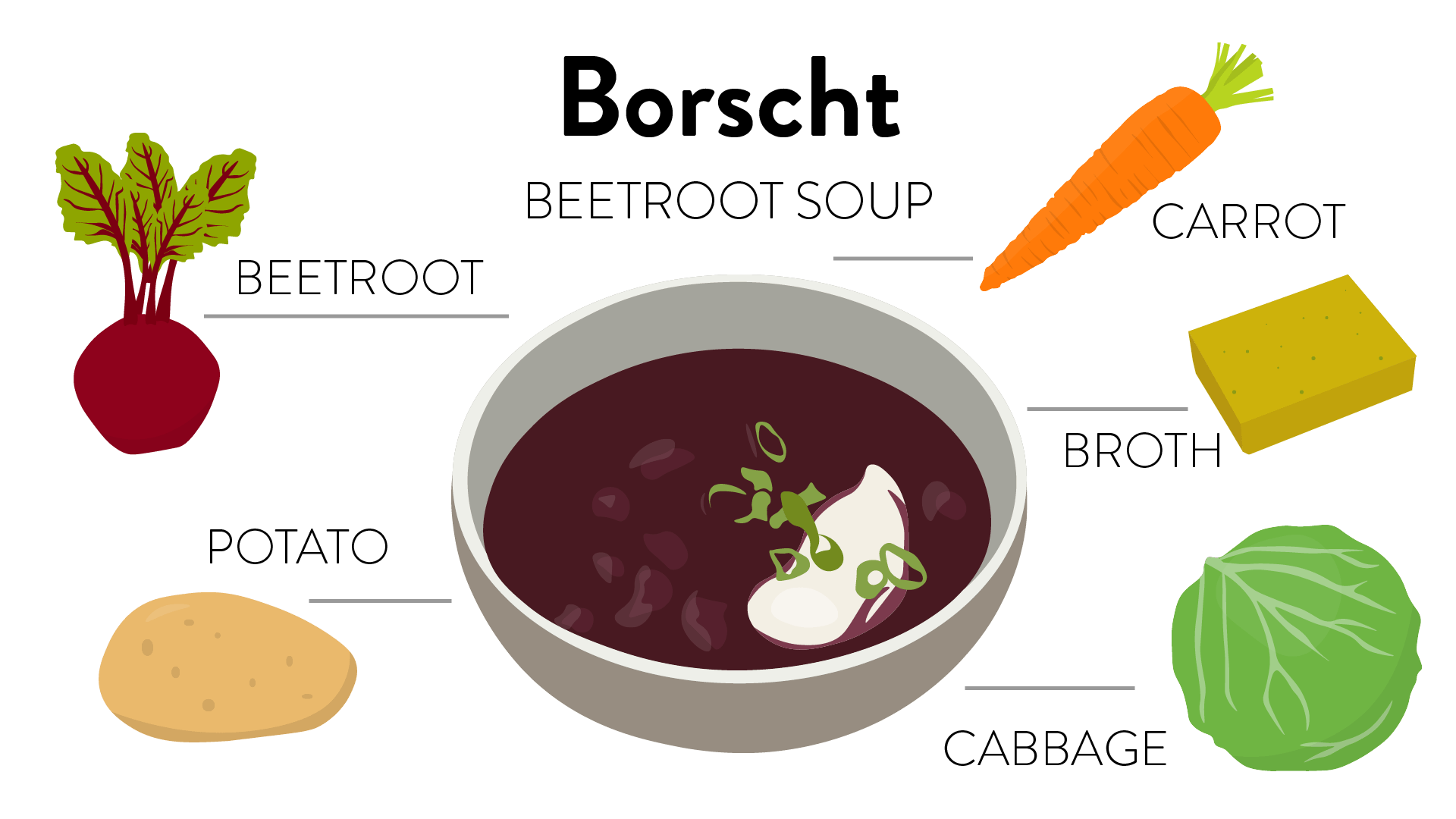If you find any problems, mistakes or missing stars make sure to click the button at the top of the page!
Let’s learn about Ukraine…
Ukraine is a pretty cool country, especially because it didn’t become a country called Ukraine until 1917. People have lived there for thousands of years though - sometimes they called themselves Ruthenians, or Cossacks, or Slavs, and now Ukrainians.
Ukrainian people have a strong history of doing things their own way. They have lots of holidays and foods and stories that you can’t find in other places in the world.
This workbook is all about the history, stories, language and food of Ukraine- let’s go!
This workbook has 7 different activities.
SCROLL DOWN
Before you start…
You’ll need some printed worksheets to complete this workbook. Start by clicking the button below and printing out the sheets.
Get a grown up to help you if you need it.
MAKE SURE TO CHECK ‘FIT TO PAGE’ WHEN YOU PRINT
When you’ve printed out the worksheets and got a pen or pencil, then scroll down to the begin the activities.
Not sure how the workbook works? Click the button below…
Here’s a bigger map…
You can click on the red circles to learn more - it might help you later!
Famous Ukrainians
Through the workbook you’ll see some colourful boxes with people in them. These are famous people from through Ukraine’s history. You can click on the pictures to make them bigger and learn a little more.
Activity 1: First Questions
There are lots of interesting things to learn about Ukraine! Can you answer the questions in this quiz?
Remember, try not to guess but actually do some research to find out the answers - ask your parents, or look on the Internet to find the answers!
One of the questions has a star next to it - the answer goes in the
Answer Grid ⭐
It’s Kyiv not Kiev!
It’s important to remember that the capital city of Ukraine is spelled Kyiv, not Kiev - even though you may see it spelled as Kiev sometimes.
Kiev is the Russian spelling and pronunciation for the city so lot of people don’t want to use it.
Activity 2: Make a map of Ukraine
Ukraine is the biggest country entirely in Europe - it’s huge!
It’s mostly land-locked (which means surrounded by land) but does have a coast on the Black Sea
Together we’re going to fill in a map of Ukraine…
On page 3 of your workbook, you’ll find a mostly blank map of Ukraine. In this activity, you’ll fill in different features on the map. You’ll need to do some research by looking at another map of Ukraine.
Maybe you have an atlas with a map of Ukraine? Or you can find a map online.
You’ll need some pens or pencils in different colours to complete this activity (black, blue, purple, yellow or orange)
Take a BLACK pencil and label the capital city of Ukraine. It’s the largest dot on the map, but do you know the name of the capital?
If you know it, label it on the map.
Take a BLUE pencil and label the sea which borders Ukraine
The Black Sea
A famous large river runs through Ukraine, called the Dniper River. We’ll learn about this river later on.
There’s also a smaller river called the Dniester River. It doesn’t run all the way through Ukraine though. It also travels through one of Ukraine’s neighbours - Moldova.
Can you label both rivers with a BLUE pencil?
(Rivers are white on this map)
Take a PURPLE pencil to label an important Ukrainian landmark.
There’s a bit of Ukraine that looks like a large island. It’s not actually an island, it’s attached to the mainland by a small piece of land. When a piece of land sticks out into the sea, it’s called a peninsula.
Can you find out what this peninsula is called, then label it?
Take your BLACK pencil again and label these cities:
When you travel south along the Dnieper River from Kyiv, first you’ll find Cherkasy, then Dnipro.
Kharkhiv is north-east of Donestsk, and Mariupol is south of Donetsk.
Odesa is next to the Black Sea (but isn’t on a peninsula)
The city of Yalta is close to Sevastopol.
Lutsk and Lviv are very close to each other
Take your GREEN pencil and label this mountain range:
The Carpathian Mountains
Look for an area of shaded lines - that’s the symbol for mountains on this map.
Now we’re going to label some a famous Ukrainian site. Use an ORANGE or YELLOW pencil to draw the symbol for the site.
In 1986 there was a famous explosion at the Chornobyl Nuclear Power station. Can you find a town that has a similar sounding name?
Draw the symbol below next to it - it’s the symbol for radioactive, which means you probably shouldn’t go near it.
Look for the town on the map that has a star ⭐
Activity 3: The Ukrainaian language
The Ukrainian language is quite similar to Russian - they share about 62% of words - but they are different languages. They also share an alphabet, called Cyrilic, which you may have seen before.
Let’s take a closer look at the Ukrainian alphabet.
Some letters might be familiar and some unfamiliar. Some of the familiar letters are actually trick letters - they make different sounds to the ones you’re used to.
For example a C in the Ukrainian alphabet is actually pronounced S.
Below you can see the Ukrainian letters and how they sound.
Take a look at page 4 of your worksheets. There are some Ukrainian names there - can you translate them using the alphabet above?
Remember some of the words don’t sound exactly the same as they do in English - make sure to pronounce the letters slowly and you should be able to figure out the name.
One of the names has a star by it - that’s the answer that goes in the Answer Grid ⭐
Let’s look at some Ukrainian history…
Ukraine wasn’t called Ukraine for most of history. It only officially became a country in 1917, when it was given the name Ukraine, which means ‘border place’.
Before then, the land of Ukraine was called lots of different things.
More than a thousand years ago, the Vikings started sailing along the rivers of Europe, trading their goods along the way. One of the rivers they sailed down was the Dnieper River, which took them all the way from Sweden to Constantinople which was a very important city.
Eventually the Vikings got bored of just sailing, and some of them decided to stay along the river. Along with some people already living there, called the Slavs, they formed a new country called Kievan Rus’. This place was the start of both Russia and Ukraine, and the capital of Ukraine is still named after it.
Eventually Mongol warriors arrived from the east and took control of Kiev.
They destroy the city of Kiev and make the people who live there work for them. The Mongols would be in charge for a few hundred years. By the time they leave Kievan Rus’ no longer exists.
For a few hundred years there were lots of different groups fighting and arguing over this area. Some of the people who wanted to be in charge were:
The Russians
The Ottoman Empire (which would later become Turkey)
Poland
Lithuania
The Crimean Khanate (which doesn’t exist anymore, but was in Crimea in the Black Sea)
Lots of different places want to control Ukraine
Luckily for Ukraine, there was a little bit of space left for a group called the Cossacks. We’ll learn about them in the next activity.
Activity 4: The Zaporozhian Cossacks
SOUNDS COMPLICATED RIGHT? YOU CAN CLICK ON THE black box TO HEAR HOW IT’S PRONOUNCED
In the past, the area where Ukraine is now was a difficult place for governments to control. It was far away from the powerful cities like Moscow in Russia, Krakow in Poland, or Vilnius in Lithuania.
That meant lots of people travelled there to get away from their governments. People who had escaped from prison, or were serfs (like a servant) and didn’t want to work anymore, or people who had done something to upset a powerful person all travelled there to start a new life. It was called the Wild Fields, because it could be wild and dangerous.
A Sich Fortress
The people who lived there had to learn to protect themselves. They could be attacked by their neighbours, especially the Crimean Tartars, from the south.
Some men started a group called the Zaporozhian Cossacks. Cossack (probably!) means free man in Turkish, because the Cossacks weren’t controlled by any government and could do what they wanted.
The Cossacks lived in a Sich, which was their name for a big building with thick walls that was very safe. The Sich was made of logs and huge stones and had room for all the local people and their animals to come inside the walls, in case someone attacked them.
Oseledets haircut
The Cossack fighters were all men. Most of them were Christian, although at the beginning people from other religions were allowed to join as well. They had strong traditions to help them stay friends and protect each other. Many Cossacks had the same haircut, called oseledets - their head was completely shaved, apart from one long piece at the front of their head.
Cossacks would all cook together at night, sharing the same cooking pot and the same food, all sitting together. After dinner someone might play the bandura, a type of instrument like a guitar that many Cossacks loved to listen to. They would tell stories and sing songs. Many of those stories and songs are still around today.
The leader of the Cossacks was always called the Hetman. The most famous Cossack Hetman was called Bohdan Khmelnytsky. He marched the Zaporozhian Cossacks to Kyiv and won more freedom for the Cossack people.
Sometimes the Cossacks would fight against another country for money. This is called being a mercenary. This helped them earn extra money and showed other governments that the Cossacks were strong enough to do whatever they wanted.
The Cossacks had to be strong and fit so they could fight. One of the ways they practiced was by dancing. The Cossack dance called the Hopak is very fast and has lots of jumping and flips. You have to be extremely strong and fit to be able to do it. Here’s a video of people dancing the Hopak.
Make sure to watch the man at 2:30!
Over time, the word Cossack started to mean all the people who lived in that area, not only the fighters. Nowadays some people still call themselves Cossacks and celebrate the same songs, dances and traditions. Not all Ukrainian people are Cossacks but lots of people are proud of their Cossack history anyway.
Take a look on page 5 & 6 of your worksheets. There’s a crossword related to the Zaporozhian Cossacks. How much of the crossword can you fill in?
The Answer that goes in the Answer Grid is 2 DOWN ⭐
The U.S.S.R. or Russia?
Maybe you’ve heard of the U.S.S.R. before. It stands for the Union of Soviet Socialist Republics, although it doesn’t exist anymore. The U.S.S.R. was a group of countries led by Russia but included lots of smaller nearby countries like Latvia, Georgia, Turkmenistan, Kazakhstan, Tajikistan and others.
Here’s a map of the U.S.S.R…
Ukraine was one of the countries of the USSR. Some Ukrainian people were happy to be part of the USSR, but others wanted Ukraine to be its own country. They didn’t like being controlled, especially as some places (like Russia) were much more powerful than others.
The USSR ended in 1991, and lots of countries split off and became independent, including Ukraine. This was the first time that Ukraine was a completely independent country.
Holodomor
When Ukraine was controlled by the USSR, some sad and difficult things happened. One of these things was called the Holodomor, which means ‘Death by Hunger’.
Because the government of the USSR was bad at planning, food ran out in Ukraine between 1932 and 1933 so there wasn’t enough for everyone. Lots of people died of hunger - about 4 million people or maybe more. Many Ukrainian people are still very angry because so many of their people died. We’re not going to talk about the Holodomor much, as it was a very sad time for Ukraine and many terrible things happened, but it is important that you know about it.
Activity 5: Ukrainian traditions through the year
Ukrainians love a party! There are lots of opportunities to gather together, play music, eat good food and dress up through the year. There are also lots of traditions that Ukrainian people do as part of their celebrations.
Of course, not all Ukrainians celebrate all of the celebrations - some are considered old fashioned, or are only celebrated in some parts of the country.
хліб і сіль
The tradition of bread and salt is very old. Guests to the house are offered both, as a way of wishing good luck and lots of money for them.
Pysanka
At Easter many Ukrainian people paint eggs with beautiful patterns. Some families have special designs which have belonged to their family for hundreds of years.
Ice Swimming
Once a year Ukrainians cut a hole in the ice of frozen lakes (usually in the shape of a cross) and jump in three times.
Independence Day
This day celebrates Ukraine becoming a country. There are lots of parades, with flags waving. The national anthem is played and some people dress up.
Ivan Kupala Night
This is a summer celebration involving nature. People jump over bonfires for good luck, float flowers on rivers and try to find ferns in the forests.
Malanka
This day used to be New Year’s Day, before the calendar changed. People sing carols and eat delicious foods, and sometimes let off fireworks. In some places, people dress up in straw costumes.
Knowledge Day
This day is linked to starting school after summer holidays. It’s all about learning and teachers. Students give flowers and presents to their teachers to say thanks.
Wet Monday
The day after Easter Sunday teenagers fill bottles with water and throw them on each other - like a big water fight. In some cities there are special Wet Monday places, so you only get splashed if you want to be.
Maslenitsa Week
This celebration lasts a whole week! It’s before Lent (when some Christians give up chocolate, meat or dairy for 40 days). Before that it’s time to eat up all the extra food by making pancakes! During this week people spend time outside and visit family.
Take a look at pages 6 & 7 of your workbooks. There’s a table there with all the Ukrainian celebrations written down. See if you can use the calendar above to work out which celebration is when. Use the pictures and the red circles to help you
One of the questions has a star - the answer to that question goes in the Answer Grid, so pay attention! ⭐
Ukrainian fairies & monsters
Ukraine shares stories with other Slavic countries, like Poland, Croatia and Belarus. Here are a few famous mythological creatures from Slavic stories.
These creatures aren’t real, they’re like the Ukrainian version of goblins, elves or fairies.
Baba Yaga is an old lady who lives in the woods, in a house raised on chicken legs. She may be nice or cruel to you, depending on the story.
Rusalky live in the water and try to persuade people to join them. If you get close to one, they will wrp their hair around your legs and try to drown you!
A Firebird is a large falcon with flaming feathers. They will often lead people on a quest but often the quest will end badly. It’s a big decision to follow a Firebird!
A Domovoi or Domowyk is a spirit that lives in your house. They are friendly and look after people, sometimes by tidying up after them.
Activity 6: Vyshyvanka
Another special Ukrainian tradition is vyshyvanka - a beautiful type of embroidery on clothes. Different colour threads are stitched onto shirts and dresses in patterns. The embroidery is often along the front and around the sleeves at the wrists.
People have been making and wearing these clothes for many years and they are considered to be lucky, with each stitch having a meaning.
This puzzle uses non-verbal reasoning which involves recognizing patterns. Below is a strip of vyshyvanka embroidery, with 9 squares missing. Can you figure out which square goes in which gaps? Look carefully for the shapes that make sense.
You can click on the embroidery to make it bigger.
Can you work out which letter goes in which gap? Which letter goes in gap 6? That’s the answer that goes in the Answer Grid⭐
A
B
G
C
H
D
I
E
F
The War in Ukraine
You might have heard that there is fighting happening in Ukraine right now. Lots of people have to leave their homes because of soldiers and fighting.
It can be a scary topic to talk and think about. If you want to learn more about exactly what’s happening in Ukraine, you can click on the button below.
If anything scares or upsets you, it’s important to talk to a grown up. They can help you feel better and understand things a bit better too. You can also have conversations with a grown up about how you can help, if you want to.
Luckily you’ve already helped a bit, when you or a grown up bought this online workbook. All the money that’s made from this is going to help people in Ukraine.
Ukrainian Food
Ukrainian food is delicious! It uses lots of things that can be grown in Ukraine like potatoes, beetroot, cabbage and flour (made from wheat). Here are a few delicious recipes, with their ingredients.
Click the buttons along the side to move through






Activity 7: Let’s help Andriy!
Andriy’s family is getting ready for a big family party, so there’s a lot of cooking to be done. Each member of the family is going to cook a different dish.
They’ve asked Andriy to help them figure out how much it will cost for each person to buy the ingredients.
Below are are some prices from the local supermarket.
Can you work out how much it will cost each relative to buy the ingredients for their recipe? You may want to use a piece of paper to write down the ingredients and costs for each type of food.
Baba (grandma) Vira is making Vareniki
Dido (grandad) Kostyantyn is making Syrniki
Titka (auntie) Raisa is making Nalisniki
Mama (mum) Yulia is making Deruny
Tato (dad) Lev is making Borscht
Dyadko (uncle) Igor is making Chicken Kyiv
One relative is cooking a meal which costs 72₴. That’s the answer that goes in the Answer Grid ⭐
Congratulations!
You’ve reached the end. You should have 7 answers now. You can write them all in the Answer Grid to reveal the vertical word.
Have you heard of this before? If not, look it up on Google and find some pictures!
Do you want to check your answer?
Click the button below and type in your answer. If you’ve got it right, you’ll get a congratulations message. If nothing happens, check your answers and try again!























































